JamMix - Headphones Practice-Play-Along Amp
|
This post was updated on .
12/19/2015 Update - Found the magazine article online: Electronics Now - October 1996
Here's something a little different... I was going through some old boxes in the basement and found remnants of a headphone practice amp I had built back in '97. The circuit was published in the October 1996 issue of Electronics Now magazine, the article was titled "Build the JamMix" by William C Hendry IV. (I also found the MODBOX by Thomas Henry and Jack Orman, I may draw that one up too) I thought the JamMix was pretty cool at the time, allowing me to use headphones and play along with my Discman  You can mix your guitar in with the audio at any level and pan it anywhere left to right. So you can mix your guitar opposite the main guitar and become the "2nd or 3rd guitarist" hearing both you and the original guitarist(s) in different parts of the headphones. Or you can mix your guitar right on top of the main guitar if you're practicing note for note. Still pretty cool  Gain - from clean to heavy distortion. Mix - adjusts where the guitar is mixed into the stereo field Level - volume mix of the guitar I added a Road Rage charge pump to provide the +/-9v, the rest of the design is the original JamMix circuit, although the original schematic showed the dual op amps as MC1458C, later mentioning 5532s and TL072s would be good substitutes. I used 5532s for mine in '97 and today, TL072s would probably be a better choice if powering with batteries. Verified by me 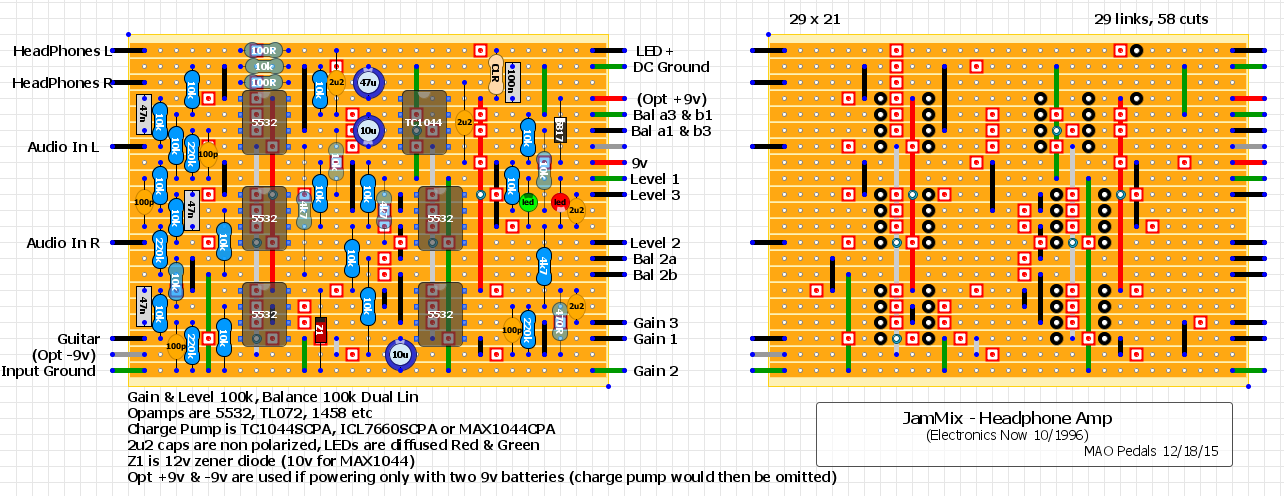 I wired mine to use either a 9v adapter or two 9v batteries in parallel, hooked up as you would a single battery. (Not sure how long the batteries will last though with the charge pump) Fits in a 125b with bottom mounted jacks and room at the top for the two 9v batteries. I used a 3mm stereo jack for the audio in, 1/4 guitar jack, and 3mm stereo headphone jack. MXR themed faceplate (125b) 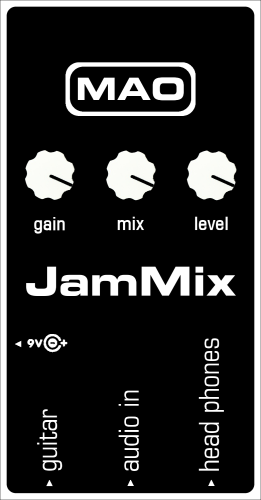
Board and Battery placements (jacks fit under pcb) 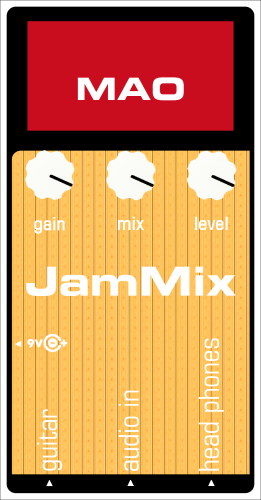 If you don't plan on ever using a 9v adapter, and don't mind adding an on/off switch, you could omit the charge pump and connect the two batteries as shown below. With this option, you hook up the two batteries in series, with the series connection tied to ground and use the optional +9v and -9v board connections. 
1978 Gibson Les Paul Standard, Cherry Sunburst
|
|
Corrected link Electronics Now - 10/1996
Follow up letter regarding the ICs and decoupling caps here on page 14 Elcetronics Now - 04/1997 I think the 1458 is a better IC for this type of distortion/clipping, looks similar to the DOD 250 and MXR distortion+ type distortions which used the LM741. I believe the 1458 is a dual version of the 741. Unfortunately the way I laid this out, the guitar signal passes through 1/2 of the 2 bottom ICs. For this build, I ended up using 4 TL072s and a 1458 for the bottom right opamp. So the distortion is happening around the 1458, but so is part of the right channel of the headphone signal. If I were to build another, I would update the layout so only the clipping takes place around the 1458 (or maybe a 741 since only 9 or the 10 stages are being used), and the rest of the audio passes through the TL072s. Not a big deal of course, as it's just a headphone practice amp. I'm also wondering if I could sub in the actual DOD 250 for the distortion circuit or maybe even a Plexi drive :0) Actually, it looks pretty easy to try, just disconnect the Level 2 wire from the pot and connect it to the output of the DOD 250. Might check that out tomorrow.
1978 Gibson Les Paul Standard, Cherry Sunburst
|
|
All it has to do as far as I'm concerned as provide a decent clean tone and take pedals reasonably well I can live without any onboard distortion.
|
|
hi
how about adding distortion pedal to this unit? |
|
Sorry, been crazy busy and trying to finish up a few effects.
The built in distortion circuit reminds me of a mxr distortion+/ dod 250 type. So I'm thinking feeding the JamMix with a distortion pedal would probably resemble feeding the mxr or dod with a distortion pedal. Maybe bypassing the distortion part of the circuit and feeding the volume pot directly with a pedal might be better. I'll check it out next week and report back.
1978 Gibson Les Paul Standard, Cherry Sunburst
|
|
Hi Mr MAO PEDALS
i already build this  , but the mp3 volume output is too low and not boost the volume from my samsung smartphone , but the mp3 volume output is too low and not boost the volume from my samsung smartphone . i used 4xne5532 and 1 lm1458 for distortion unit. Can u help me ?and i m waiting how to remove distortion unit from this jammix too, so i only get clean tone only and using distortion section from my pedal only . i used 4xne5532 and 1 lm1458 for distortion unit. Can u help me ?and i m waiting how to remove distortion unit from this jammix too, so i only get clean tone only and using distortion section from my pedal only 
thank you for your layout  BR agung |
|
This post was updated on .
Now that you mention it, I'm experiencing a slight volume drop between the audio device and the JamMix.
I hadn't noticed because when I can crank up the ipod/phone/kindle and it's plenty loud. How much of a volume difference are you getting between the audio device and the JamMix? It looks like everything on the layout is per the schematic, and the description in the article states there is a gain of 2 for the audio input and another gain of 2 at the final mix. Not exactly sure why the volume is slightly reduced. I'll do some research and see if I find anything that may explain it. Increasing these 2 resistors with increase the gain for the audio input, I'll see if increasing those somewhat will create unity gain without adding noise. In theory, I guess those 2 10k resistors could be replaced with a dual-pot, maybe 50k. But 1st things 1st, I'll get out an audio probe and see where the volume drops off. 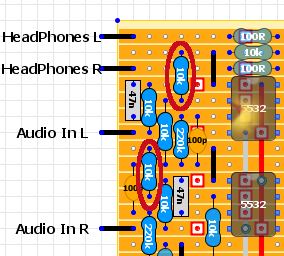 As for the distortion circuit, you should be able to get a completely clean tone with the original design. But again, I will try a pedal in front and also bypassing the internal distortion circuit connected directly to the Volume pot. Unfortunately, won't get to either until the weekend...sorry.
1978 Gibson Les Paul Standard, Cherry Sunburst
|
|
I finally got back to this one.
I increased the 2 10k resistors circled above to 51k and the audio volume from the JamMix is now about the same as the audio source. There is definitely some loss with the lows though, it seems the circuit around the audio input probably needs some tweaking. Also, I bypassed the stock distortion circuit by disconnecting the wire from lug 2 of the level control and connecting it to the output of a couple pedals: The Paisley Drive worked, but didn't sound so great, but then again I'm not a fan of that pedal. The Runoffgroove Ginger sounded much, much better. My guess is pedals such as the Wampler Black 65, Tweed 57, Plexi Drive and similar pedals with decent tone controls and volume/gain controls would all sound good. I think there's enough potential that its probably worth bread boarding and tweaking the audio input to better reproduce the source audio, or at least retain more of the lows. If you have already built this layout, I would suggest replacing the 2 10k resistors with something like 51k as noted, and maybe add a switching jack for the Level 2 connection. So when nothing is plugged into the switching jack, the internal distortion circuit is used and when plugging the output of a pedal into the switching jack, the internal distortion is "bypassed". I'm considering drawing up a new layout that will either omit, or replace, the original distortion circuit. I like the idea of allowing for other pedals to be plugged in with a switching jack. I'm also going to see what I can do about improving the audio input. Mike
1978 Gibson Les Paul Standard, Cherry Sunburst
|
|
Hy mr Mao
Ok here we go --> http://imagizer.imageshack.us/a/img922/8991/lE1qWf.jpg i increased the 2 10k (resistors circled ) with 50k and the volume from my mp3 player is increased but there is definitely some loss with the lows like yours. I will try to change input cap 47n to 100n or 470 nF just like cmoy schematic -->http://diyaudioprojects.com/Chip/CMoy-Grado-RA1-Headphone-Amp/OPA2134PA-CMoy-Headphone-Amplifier-Schematic.png and see the result  i will try to adding cabinet simulator in front of the jammix too, maybe will make this unit more versatile Thanks for your layout 
|
|
I ended up changing this circuit quite a bit, actually I think the only section I've retained from the original design is the pan pot. It's really no longer the JamMix, but the same idea...a headphone amp to play along with the output from a phone/ipod/tablet etc.
I stripped down the Audio input part of the circuit and now I can't tell the difference between the headphone jack from my ipod/Galaxy5/Kindle compared to the headphone output from the JamMix. The original JamMix circuit seemed to dull the audio a bit. This is the circuit I used for the audio input. (Although I never got the noise cancelling effect working all that well, the audio sounded pure, so I used the same audio input design for this version of the JamMix) I also removed the original JamMix distortion circuit. It was ok, but I lost interest fairly quickly. I built a temporary tester version which has 18v, +9v and -9v outputs. This allows for easy testing of a bunch of overdrive/distortion circuits with various power requirements. The idea was to find a smaller distortion footprint that sounded good both clean and distorted through headphones. Then rotate the modified jammix sideways and place both boards into a single enclosure wired together...And then eventually draw up a new combined board. Most of the smaller overdrive/distortion designs I've tried so far sounded a bit harsh through the headphones, or wouldn't go clean enough. (Lovepedal) The madbean MOAR is the winner at the moment. To keep the controls down to 3, I hard wired the asymmetrical clipping, omitted the symmetrical diodes and clip switch, and preset the tone control with 39k and 11k resistors in place of the tone pot. The MOAR layout is a bit larger than I would have liked, so the search for a smaller footprint is still on. But I've been playing this combination for a few days now, and still like it. If I haven't found something smaller/better, I'll post a combined layout for the MOAR and stripped down JamMix. Here is the tester pcb if someone else wants to join in the search. The output from an external pedal goes to the "effect in" on the tester pcb. 
1978 Gibson Les Paul Standard, Cherry Sunburst
|
|
So I ended up going with a Timmy for the overdrive/distortion.
Sounds great clean, and pretty good with the drive cranked up. The MOAR also sounded pretty good, but the bass and treble controls of the Timmy do a nice job dialing in a good tone through the headphones. For mine, I made the treble and bass controls trimmers so I could keep the enclosure layout the same, plus I figure with a headphone amp, those controls would be set and forget anyway unless I change headphones or guitars. I kept the two boards separate in case I find another small distortion layout that works. But I'm done with this one for now! IMO, with this setup the audio sounds much better than the original Jam Mix, as does the guitar's clean tone and distortion. 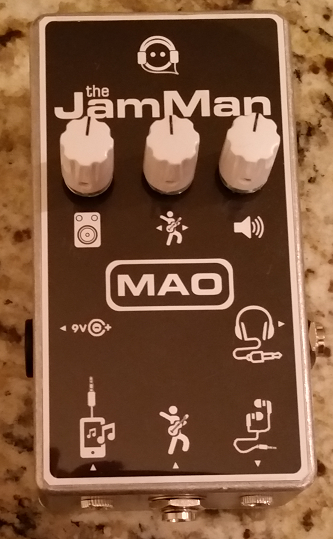 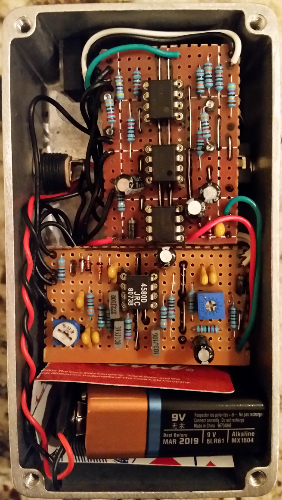
1978 Gibson Les Paul Standard, Cherry Sunburst
|
«
Return to Amps
|
1 view|%1 views
| Free forum by Nabble | Edit this page |

